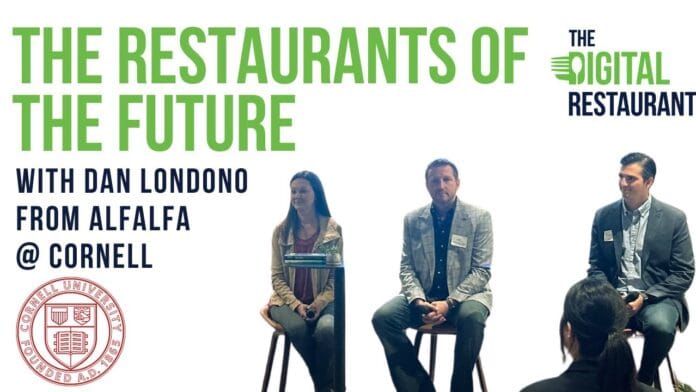The restaurant industry is undergoing a seismic shift, driven by evolving consumer preferences, technological advancements, and the impact of global events such as the COVID-19 pandemic. As we look ahead, several key trends are emerging that promise to redefine the dining experience, making it not just a meal, but a multifaceted adventure that engages all the senses. Here are some of the most significant trends shaping the future of dining.
1. Emphasis on Health and Well-Being
In recent years, there has been a notable shift toward health-conscious eating. Many consumers are prioritizing nutritious and wholesome food options, seeking out restaurants that offer organic, plant-based, and locally sourced ingredients. Menus are increasingly featuring transparent labeling, providing guests with detailed information about calorie counts, allergens, and nutritional benefits.
Moreover, the concept of wellness extends beyond the food itself. Restaurants are also investing in their physical ambiance, incorporating elements such as natural lighting, calming decor, and air purification systems to create a more inviting and health-centric environment. Expect to see menus that highlight functional foods—ingredients that provide health benefits beyond basic nutrition, such as adaptogens, probiotics, and superfoods.
2. Technology-Driven Experiences
As technology continues to evolve, so too does its integration into dining experiences. The rise of mobile apps for reservations, contactless payments, and digital menus has revolutionized the efficiency of dining. However, the future of dining is also about enhancing the customer experience through technology.
Augmented reality (AR) and virtual reality (VR) are poised to play a significant role. AR can provide interactive menus where diners can visualize their meals before ordering, perhaps even seeing virtual representations of dish components. Meanwhile, VR can transport customers to different settings or cultures, creating immersive dining experiences that engage the senses in unprecedented ways.
Robotics and AI are also becoming more prevalent in restaurants. From robotic chefs to AI-driven customer service, these technologies not only improve efficiency but also personalize the dining experience based on consumer preferences and previous interactions.
3. Sustainability and Eco-Conscious Dining
The mounting awareness of climate change and sustainability issues is prompting consumers to seek out restaurants that prioritize environmental responsibility. From farm-to-table sourcing to zero-waste practices, the ethos of sustainability is becoming integral to the restaurant industry.
More establishments are adopting practices such as composting, recycling, and using biodegradable packaging. Restaurants are increasingly investing in sustainable seafood, organic farming, and regenerative agricultural practices. Moreover, consumers are drawn to restaurants that engage in community initiatives, promoting local farms and reducing their carbon footprint.
Additionally, menu items that emphasize plant-based options are gaining traction, as more diners look to reduce their meat consumption for both health and environmental reasons.
4. Unique and Experiential Dining
Today’s consumers are increasingly looking for more than just a meal; they seek experiences. As a result, many restaurants are emphasizing unique concepts, such as themed dining, interactive cooking classes, or chef’s tables where patrons can engage with the culinary team.
Pop-up restaurants and food trucks, which offer limited-time experiences, are also gaining popularity. These ephemeral dining options allow chefs to experiment with innovative culinary concepts and menu items without the long-term commitment of a brick-and-mortar establishment.
Furthermore, restaurants are exploring collaborations with artists and musicians to create vibrant atmospheres that enhance the dining experience. Events such as wine pairing dinners, chef collaborations, and cultural celebrations are becoming common, drawing in adventurous diners eager to try something new.
5. Hybrid Models and Delivery-First Approaches
The pandemic has accelerated the rise of hybrid dining models. Many restaurants have discovered the benefits of offering both in-person dining and takeout or delivery services. As consumers grow accustomed to the convenience of dining at home, the demand for reliable and delicious delivery options continues to rise.
This trend has led to the creation of “delivery-only” kitchens, also known as ghost kitchens, which operate without a traditional dining space. These kitchens focus solely on delivery and are often able to reduce overhead costs, allowing for more innovative menu concepts.
In addition, restaurants are reimagining their spaces to accommodate more flexible layouts that can easily transition between in-person dining, takeout, and delivery services.
6. Focus on Community and Connection
In times of social distancing and isolation, the importance of community connection has gained prominence. Restaurants are becoming more than just places to eat; they are vibrant social hubs that foster connections and encourage interaction. This trend is prompting restaurants to design their spaces in a way that promotes communal dining and shared experiences.
Many establishments are now incorporating features such as communal tables, open kitchens, and event spaces to host community gatherings, workshops, and celebrations. This focus on hospitality and community-building is revitalizing the dining experience, making it more inclusive and enriching.
Conclusion
The future of dining is marked by a transformative blend of health consciousness, technological innovation, sustainability, and community engagement. As restaurants adapt to these emerging trends, they are not only meeting the evolving demands of consumers but also creating richer, more immersive dining experiences. For both diners and restaurateurs alike, the culinary future is bright—full of opportunities to explore new flavors, foster deeper connections, and embrace culinary creativity. The restaurant experience of tomorrow promises to be an exciting journey that tantalizes the taste buds and nourishes the spirit.


